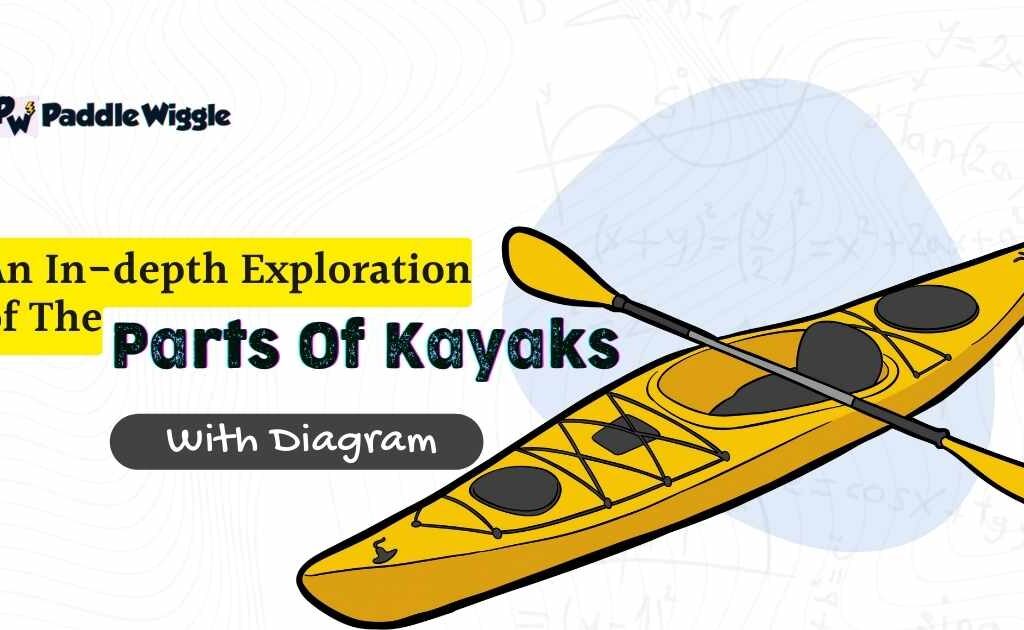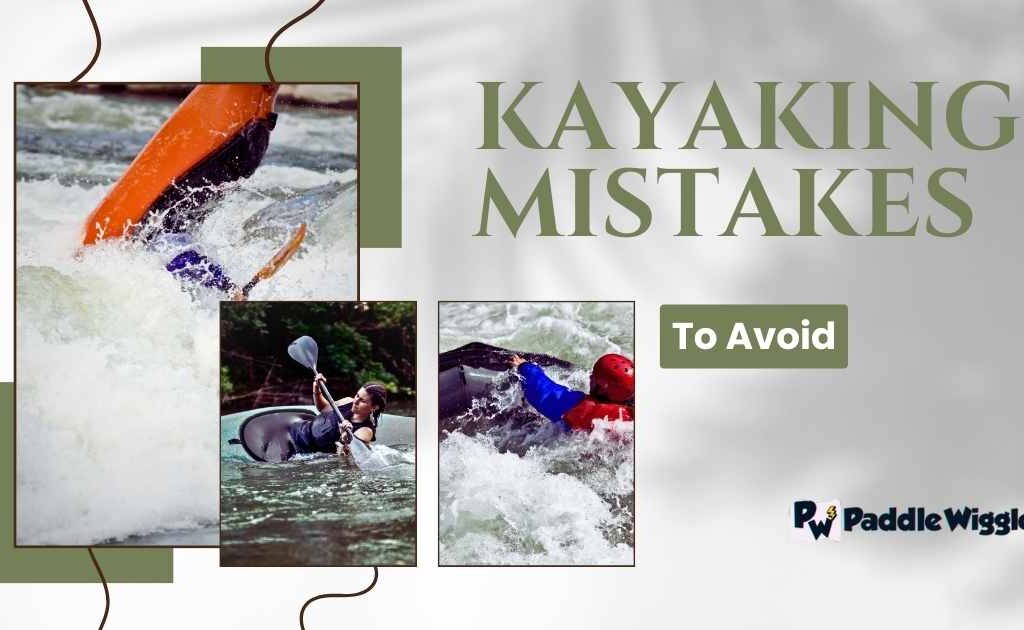Kayaking emerged as a popular recreational activity in the 19th century, drawing enthusiasts to explore diverse aquatic environments worldwide. However, the rapid growth of kayaking raises concerns about its potential environmental impact.
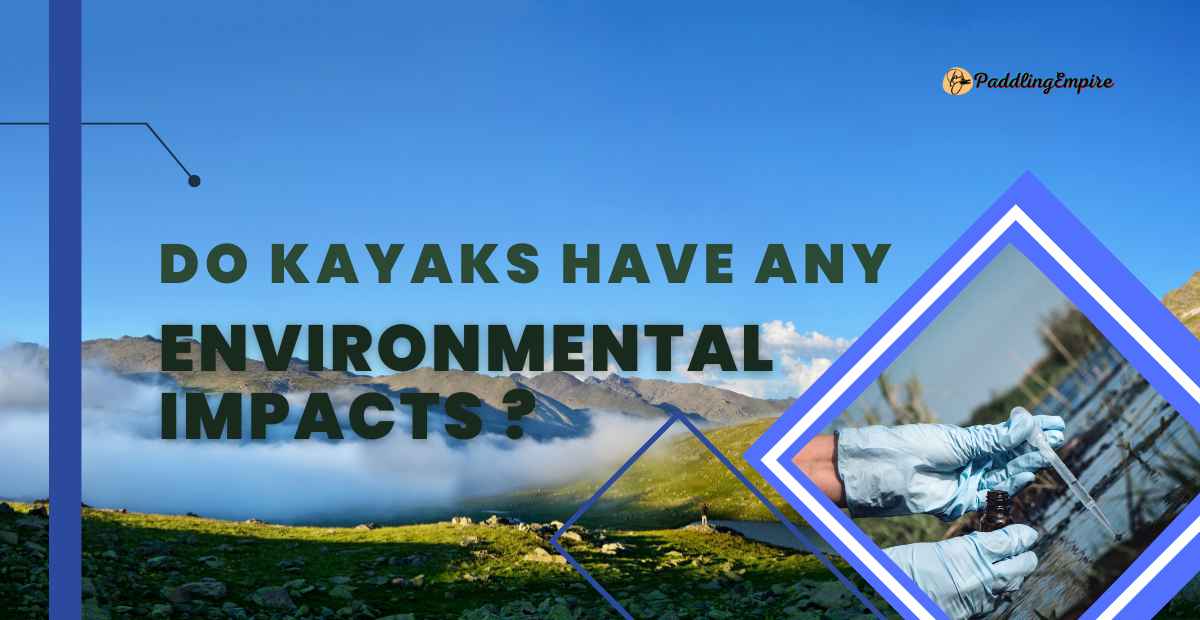

Let’s address the burning question first – Do kayaks have any environmental impacts? Yes, kayaks do have environmental impacts. When we go kayaking, our presence and activities can impact various aquatic life in different ways. Additionally, paddling in shallow waters can stir up sediment, affecting aquatic plants and organisms.
I’ve been a kayak instructor for a while now and noticed something interesting. Traditional kayaking and using motorized kayaks can have different effects on our surroundings. So, I decided to dive deep into this topic and find out more.
This research aims to provide a comprehensive understanding of the environmental implications associated with kayaking, focusing on seven key aspects:
- Assessing Disturbance to Wildlife and Ecosystems
- Examining Water Pollution
- Assessing Physical Impact on Aquatic Habitats
- Analyzing Material and Production Impacts
- Comparing the environmental impacts of Traditional Kayaking vs. Fuel-based Motorized Kayaks
- Identifying Sustainable Practices.
- Assessing Regulatory Measures and Conservation Strategies
There are a few things we aim to achieve with this research. First, we want to explore how different types of kayaking affect the environment. Second, we’ll compare the effects of traditional kayaking with those of using motorized kayaks.
And finally, we’ll look for ways to practice kayaking more sustainably and eco-friendly, so we can take care of our precious water ecosystems.
It’s like we’re on a mission to balance our love for kayaking with the responsibility to protect our natural world.
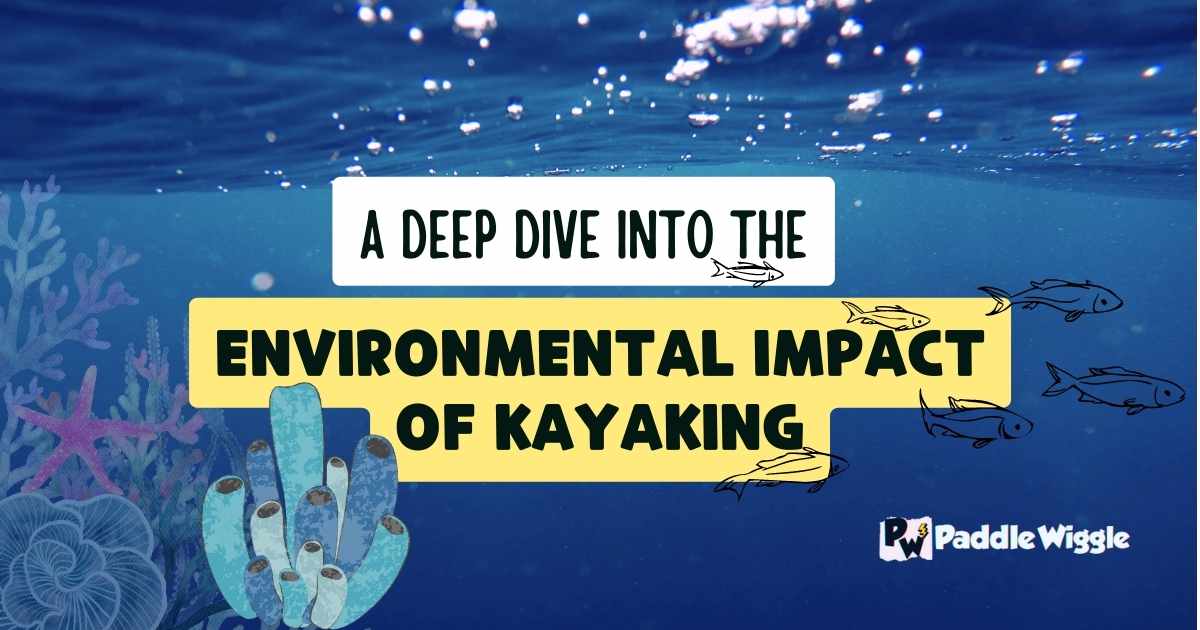

In this research
Negative Environmental Impacts of Kayaking
While kayaking is generally considered an eco-friendly way to explore waterways, it’s essential to be aware of some potential negative environmental impacts it can have.
Let’s examine and evaluate these impacts in simple terms:
Section 1: Disturbance to Wildlife and Ecosystems
When people go kayaking in rivers, lakes, or coastal areas, they might unknowingly cause disturbances to the wildlife living there. When you’re quietly enjoying your kayak ride, and suddenly you spot a bird’s nest on the shoreline. If you get too close to it, the birds might feel scared and stressed, possibly abandoning their nests, which can be harmful to their eggs or chicks. It’s a common scenario. This disturbance doesn’t just affect birds; it can also impact other wildlife.
If you paddle too close to areas where animals rest or hide, they might get scared and flee, disrupting their natural behaviors. Some animals might rely on these quiet spots for resting or raising their young. Disturbing them can have serious consequences for their survival. These disturbances can also affect the entire ecosystem.
When animals are constantly scared away from their feeding or nesting areas, it can disrupt the balance of nature.
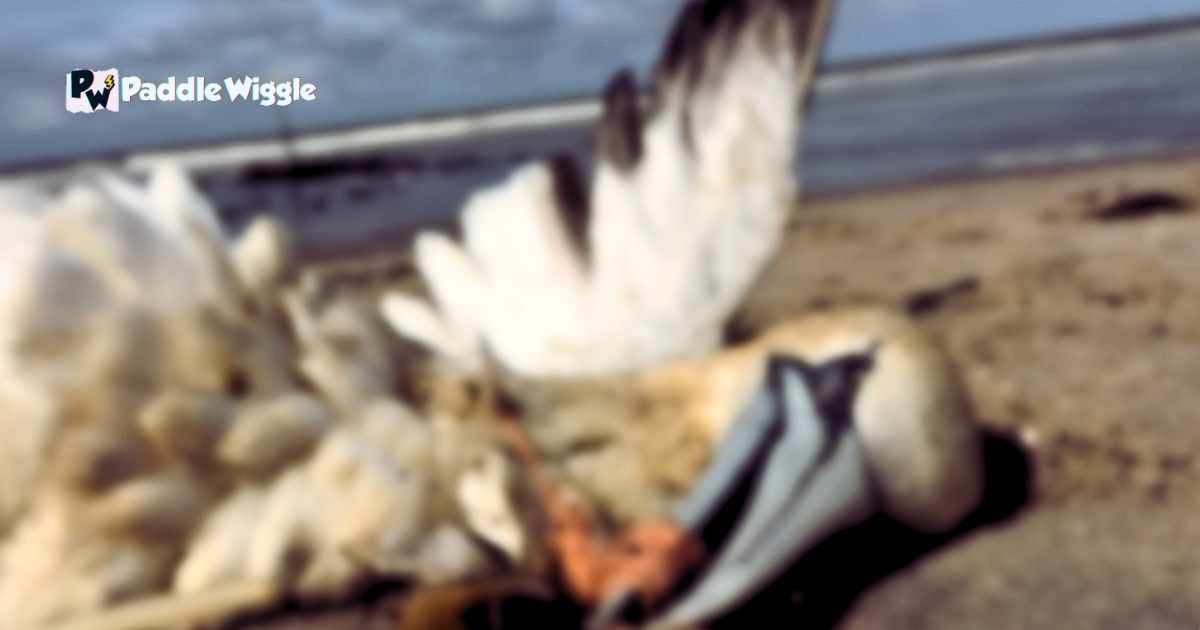

Some animals might become more abundant, while others could decline in numbers. This, in turn, can affect other animals and plants in the ecosystem, leading to a chain reaction of changes.
Repeated disturbances caused by kayakers can negatively impact the ecosystem long-term. Wildlife may become habituated to human presence, altering their natural behaviors and becoming more reliant on human-provided food. This can be detrimental to their health and survival. Additionally, disturbances can cause stress to animals, making them more vulnerable to diseases and predators.
Fragile habitats like wetlands and coastal areas are particularly sensitive to disturbances. These environments support a rich diversity of species that depend on each other for food and shelter.
If kayakers disrupt these habitats, it can have cascading effects on the entire ecosystem. And disturbing the nesting grounds of shorebirds could lead to decreased reproductive success, affecting their populations and disrupting the food chain.
While kayaking is a wonderful way to connect with nature, it’s essential to be mindful of the wildlife around us. To minimize disturbances while kayaking, it’s crucial to follow a few simple guidelines:
- Respect Wildlife: Keep safe from resting, nesting, or feeding areas. Use binoculars or a zoom lens camera to observe wildlife without getting too close.
- Stay Quiet: Avoid making loud noises or sudden movements that could startle animals. Paddle smoothly and quietly to minimize disruptions.
- Obey Regulations: Be aware of any rules or guidelines in your kayaking area. Some places may have specific restrictions to protect wildlife and their habitats.
- Leave No Trace: Properly dispose of waste and litter. Carry out everything you bring with you, including food wrappers and plastic bottles, to prevent pollution and protect the environment.
- Educate Others: Spread awareness among fellow kayakers and outdoor enthusiasts about the importance of respecting wildlife and practicing responsible kayaking.
Section 2: Consequences for Local Flora and Fauna
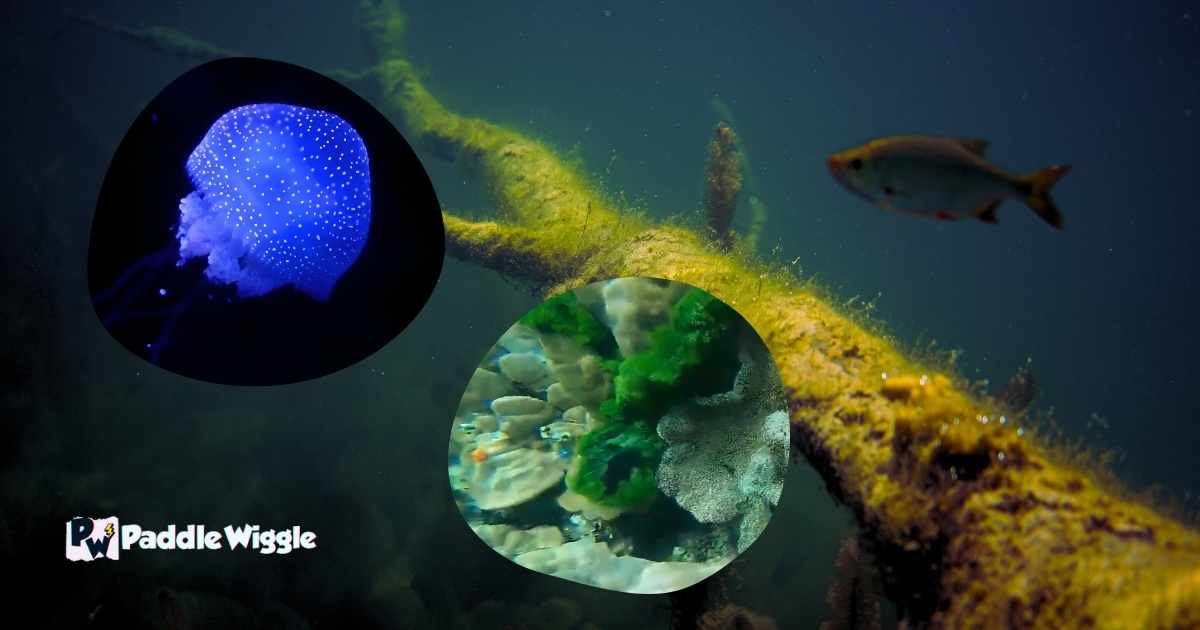

Kayaking can impact delicate marine ecosystems like coral reefs and seagrass beds in coastal areas. Kayakers may unintentionally come into contact with coral reefs, causing physical damage to the fragile coral colonies.
Similarly, seagrass beds, which serve as nurseries and habitats for numerous marine species, can be harmed by disturbances from kayaking activities.
The consequences for local flora and fauna can also extend to the entire ecosystem. Ecosystems are intricate networks where different plants and animals interact and depend on each other. When disturbances affect certain species, it can disrupt the balance of the entire ecosystem.
A decline in one animal population may cause a ripple effect, leading to changes in the abundance of other species and affecting the overall health and diversity of the ecosystem.
To minimize the consequences for local flora and fauna while kayaking, it’s important to adopt responsible and considerate practices:
- Respect Wildlife and Habitat: Stay at a safe distance from resting, nesting, or feeding areas to avoid disturbing animals and their habitats.
- Follow Designated Routes: Stick to designated waterways and avoid venturing into sensitive or restricted areas to protect critical habitats and nesting sites.
Section 3: Water Pollution
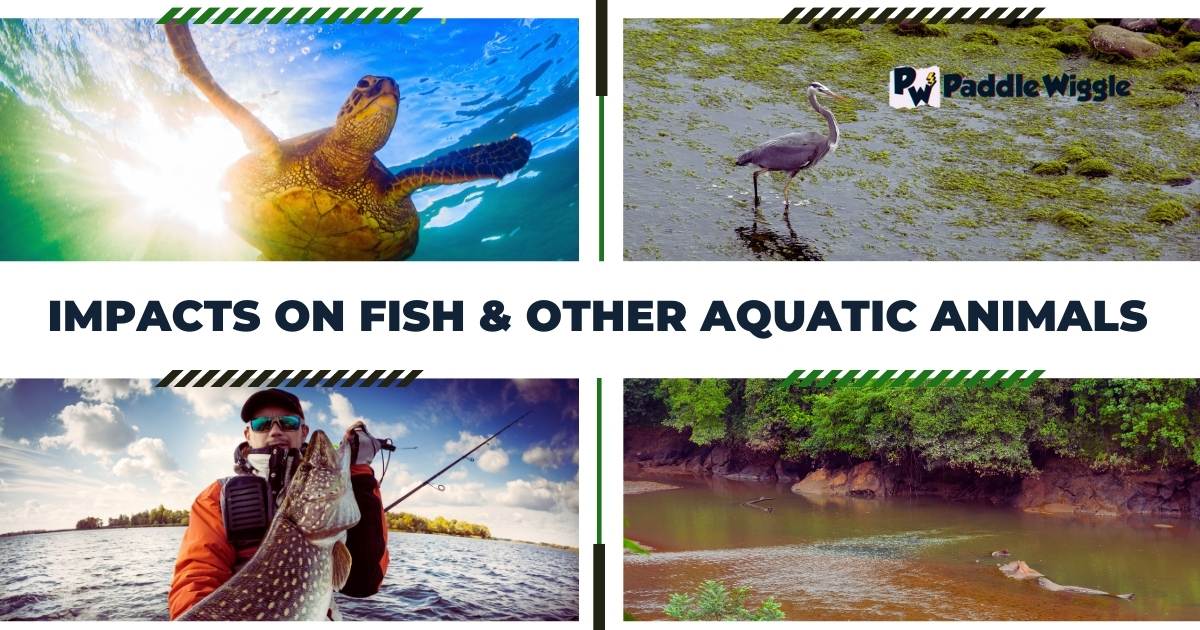

When people go kayaking, there’s a risk of unintentionally causing water pollution, which can harm the water and the living creatures that depend on it. Pollution is when harmful substances or waste get into the water, making it dirty or unsafe for plants, animals, and even humans.
One common way kayaking can contribute to water pollution is through accidental spills or leaks. If kayakers bring drinks or snacks in plastic bottles or containers, there’s a chance that they might accidentally drop or tip them over, spilling the contents into the water.
Even a small amount of spilled drink or food might not seem like a big deal. But when many people are kayaking in the same area, these small spills can add up and affect the water quality.
Another way water pollution can happen during kayaking is with motorized kayaks that use fuel to run. Sometimes, fuel can leak from these motorized kayaks into the water, releasing harmful chemicals. These chemicals can be dangerous for aquatic life and contaminate the water, making it unsafe for animals and people who might come into contact with it.
Besides spills and leaks, improper waste disposal is another issue that can contribute to water pollution. Some kayakers might throw their trash directly into the water or leave it on the shores, like plastic bottles or food wrappers. These items can take a long time to break down; in the meantime, they can harm the water and the creatures in it.
Water pollution is a serious problem because it can have many negative effects. Polluted water can make animals and plants sick or even kill them. In fact, fish might not be able to swim as they naturally do or find enough food in polluted water. And this can lead to a decline in their populations.
Additionally, polluted water can be harmful to people who swim or drink from it, causing health issues.
To prevent water pollution while kayaking, there are simple steps we can all take:
- Check for Leaks: If you’re using a motorized kayak, regularly inspect it for leaks or fuel spills to prevent harmful chemicals from getting into the water.
- Proper Waste Disposal: Always bring a trash bag with you and make sure to take all your trash back with you, including food wrappers and any other waste. Dispose of it responsibly in designated waste bins.
- Support Clean-Up Efforts: Participate in local clean-up events or join organizations to keep water bodies clean and pollution-free.
Section 4: Waste Generation during Kayaking Trips
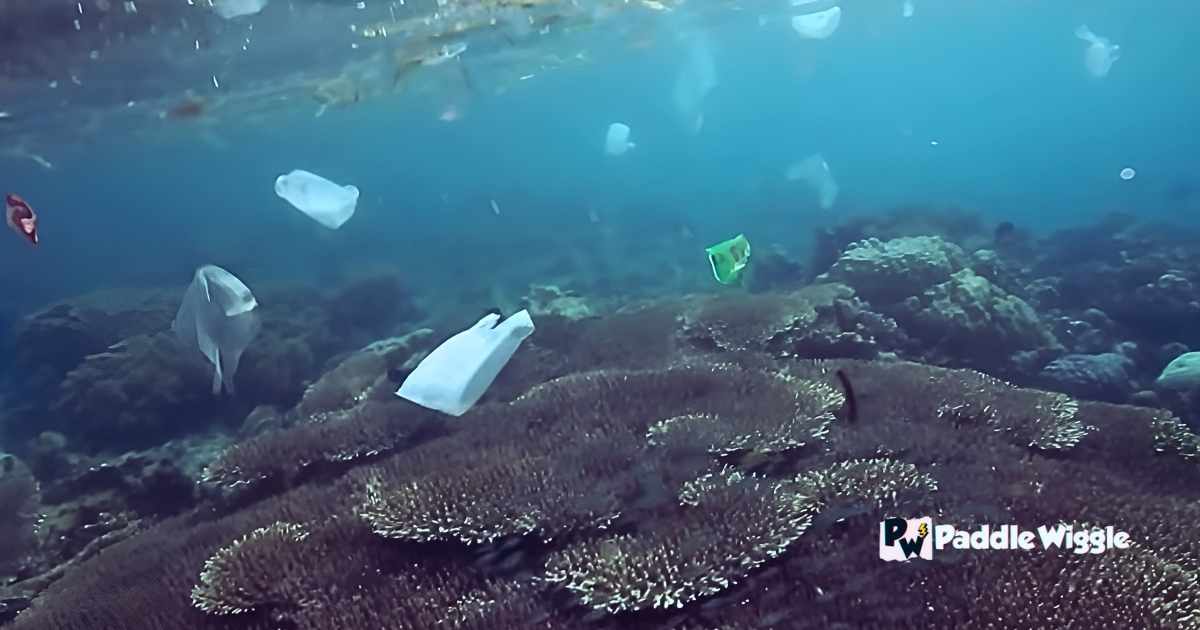

When people go kayaking, they often bring along food, snacks, and drinks to keep them energized and hydrated during their adventure. However, this can lead to waste generation, where trash like food wrappers, plastic bottles, and other disposable items are left behind. This waste can be harmful to the environment and the wildlife that calls these waterways home.
During kayaking trips, it’s easy for small items like plastic wrappers or bottle caps to accidentally fall into the water.
Even though these may seem like tiny bits of litter, they can add up over time and greatly impact the environment. These small pieces of trash can be ingested by aquatic animals, leading to health issues or even death.
Larger items like plastic bottles or single-use containers are also commonly used during kayaking trips. If these items are not properly disposed of, they can end up littering the shores and waterways. This not only spoils the area’s natural beauty but can also endanger wildlife.
Animals might mistake the litter for food or get entangled in it, which can be harmful to their health and survival.
Waste generation during kayaking trips is a problem because it contributes to pollution and threatens the ecosystem’s delicate balance. When we leave our trash behind, it can take a long time to break down, causing long-term harm to the environment.
Plastic, in particular, can persist in the environment for hundreds of years, continuing to harm wildlife and water quality.


To reduce waste generation during kayaking trips and protect the environment, we can take some simple steps:
- Bring Reusable Items: Instead of using single-use items like plastic water bottles or food wrappers, opt for reusable containers and utensils made from materials like stainless steel or BPA-free plastic.
- Pack a Trash Bag: Bring a small, waterproof trash bag with you to collect all your waste during the trip. This way, you can easily take your trash back with you and dispose of it responsibly in proper waste bins.
- Participate in Clean-Up Events: Join local clean-up efforts or volunteer with organizations dedicated to keeping waterways and nature areas clean and free from litter.
Section 5: Physical Impact on Aquatic Habitats
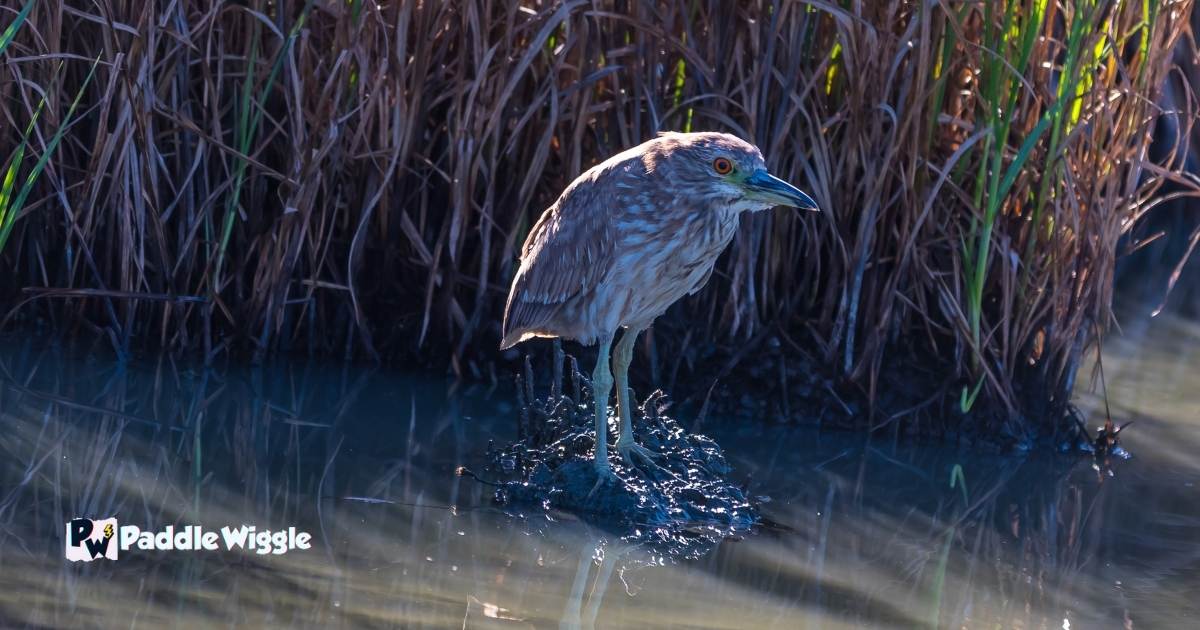

When people go kayaking in rivers, lakes, or coastal areas, their presence and activities can affect the homes of many underwater animals and plants. These homes are like neighborhoods for the creatures that live in the water.
One way kayaking can harm these habitats is by stepping on delicate plants and roots when kayakers walk on the riverbanks or marshy areas. These plants are important because they stabilize the soil and provide wildlife shelter and food. Disturbing these habitats can upset the balance of nature and hurt the animals that rely on them.
Kayaking can also stir up the bottom of the water when paddling, making the water cloudy and blocking the sunlight that underwater plants need to grow. The stirred-up sediment can also smother small aquatic creatures, making it hard for them to survive.
In places with coral reefs and seagrass beds, kayaking can cause damage too. The scraping or bumping of kayaks against coral reefs can break them, and these reefs are homes to many sea creatures. Seagrass beds are like nurseries for baby fish, and disturbances from kayaking can harm them.
To protect these underwater homes while kayaking, you can follow some simple rules:
- Choose Appropriate Landing Sites: Choose the right places to land when you want to stop your kayak and get out. Look for sandy shores or places specifically made for launching kayaks. This way, you won’t accidentally step on and hurt delicate plants.
- Paddle Mindfully: When you paddle your kayak, be aware of how deep the water is. Try not to stir up the mud or sand from the bottom, especially in shallow areas or where important plants and animals live.
- Stay Away from Sensitive Marine Life: If you’re in a coastal area with coral reefs or seagrass beds, be careful not to get too close to them. Keep a safe distance to avoid accidentally bumping or breaking these fragile habitats where many marine creatures live.
- Follow Designated Waterways: Stick to the paths that are meant for kayaking. Don’t go into areas where you’re not supposed to go. This helps protect the homes of animals and birds, like nests and special habitats they need to survive.
Section 6: Kayak Manufacturing and Materials
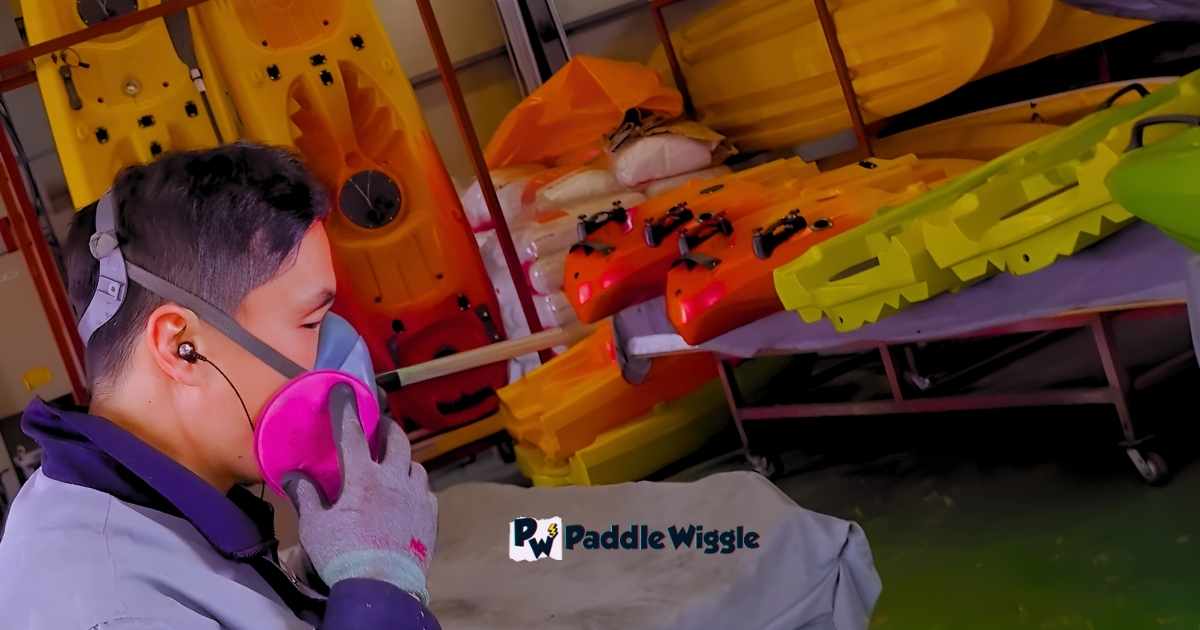

Kayak manufacturing involves a range of materials and production methods, each with its ecological implications. Today, polythene and composite materials are the two most used materials for kayaks. Now explore how these can impact the environment.
Polyethylene (PE)
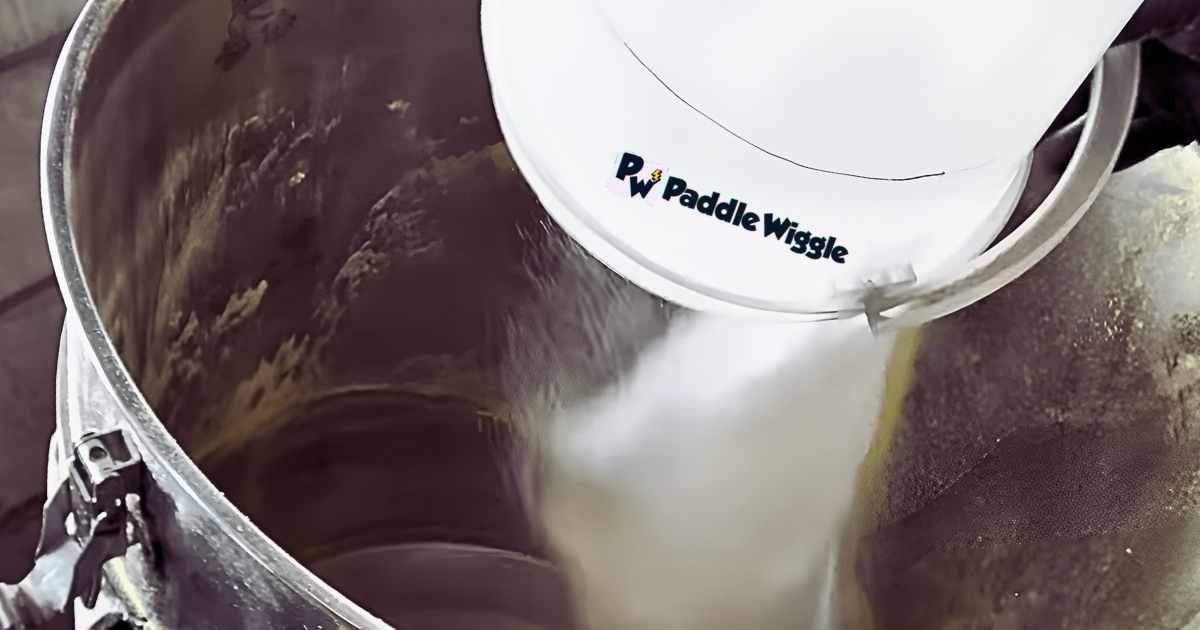

While PE kayaks are durable and affordable, they have higher environmental impacts compared to composite kayaks. The production of PE involves the use of fossil fuels, and these kayaks are not easily recyclable at the end of their lifespan, contributing to plastic waste.
Composite Materials
Composite kayaks made from fiberglass, carbon fiber, and Kevlar are generally more eco-friendly in terms of production. These materials are recyclable and have lower energy requirements during manufacturing. However, the environmental impact may vary depending on the specific resins and manufacturing practices used.
Environmental Impacts Of Traditional vs. Fuel-based Motorized Kayaks
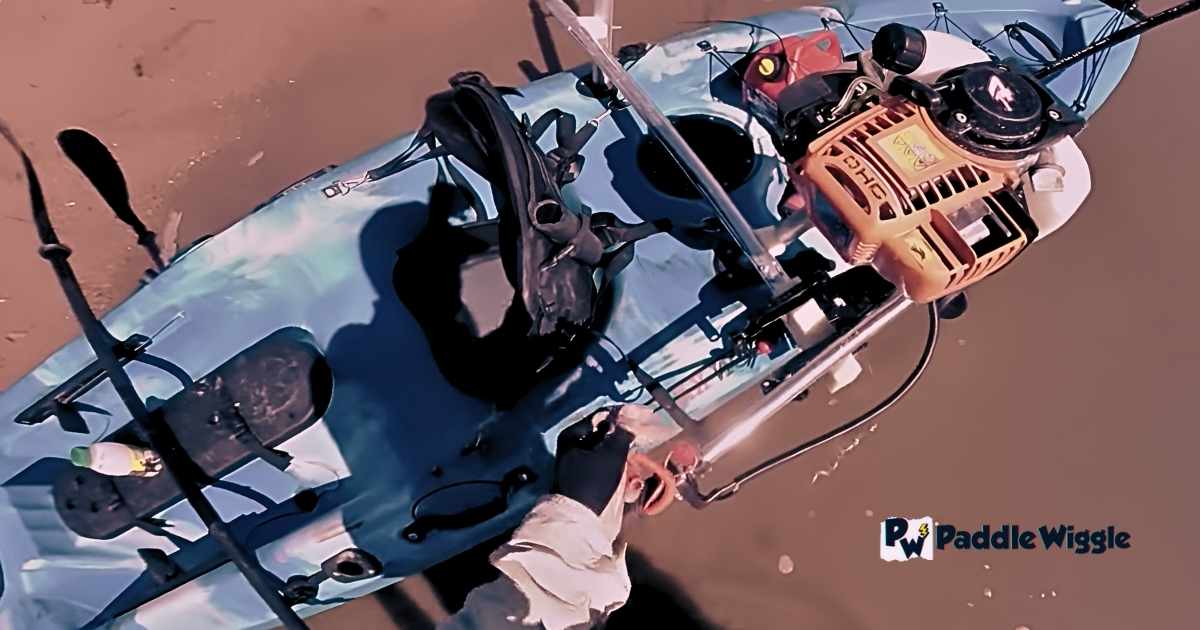

What exactly is it that sets the fuel-based motor kayaks apart? Primarily, it’s the engine! The noise it generates can startle wildlife, disrupting feeding, breeding, and other vital behaviors. Its fuel emissions contribute to water pollution and climate change. Moreover, the propellers can disturb the water, altering habitats and causing physical harm to aquatic life.
Both the traditional human-powered and the motorized kayaks make their marks on the environment, but they do so in very different ways.
Let’s explore these in simple terms:
Environmental Impact:
- Traditional kayaking has a small environmental impact. Since it’s human-powered, it doesn’t release any harmful emissions or pollutants into the air or water. It’s a sustainable and eco-friendly way to explore nature.
- Motorized kayaks, on the other hand, can have a bigger impact on the environment. The engines burn fuel, releasing pollutants like carbon dioxide and harmful chemicals into the air. They can also spill fuel, contaminate water, and harm plants and animals.
Noise and Disturbance:
- Traditional kayaking is quiet, allowing paddlers to glide silently through the water. This quiet approach minimizes disturbance to wildlife, providing opportunities for peaceful wildlife encounters.
- Fuel-based motorized kayaks generate noise from their engines, which can startle and disturb wildlife. The noise may disrupt the natural behaviors of animals, affecting their well-being.
The Importance Of Practicing “leave-no-trace” principles
Leave-No-Trace (LNT) principles are essential guidelines that promote responsible outdoor practices to minimize environmental impacts. When kayaking, it’s crucial to follow these principles to protect the natural beauty of waterways and preserve the habitats of wildlife.
Let’s explore what to do, how to do it, and when to apply these principles while kayaking:
- Paddle Eco-Friendly: Consider using a paddle made from sustainable materials like bamboo or recycled plastic. Eco-friendly paddles have a lower environmental impact and help reduce waste.
- Participate in Clean-Up Paddles: Organize or join clean-up paddles in your local waterways. Kayakers can work together to remove litter and debris from the water, positively impacting the environment.
- Respect Aquatic Plants: Avoid paddling through dense vegetation like water lilies or marsh grasses. These plants provide essential habitat and food for aquatic animals, and disturbing them can disrupt the ecosystem.
- Adopt a “Pack It Out” Mentality: Challenge yourself to pick up at least one piece of trash every time you go kayaking, even if it’s not yours. Encourage others to do the same, and together, we can make a significant difference in keeping our waterways clean.
- Support Local Conservation Efforts: Contribute to local conservation organizations or volunteer for restoration projects in your area. Supporting these initiatives helps protect the natural habitats you love to explore during kayaking trips.
- Practice Wildlife Observation Etiquette: If you encounter wildlife during your kayaking adventure, be patient and observe from a distance. Avoid approaching or chasing animals, allowing them to go about their natural behaviors without disturbance.
- Reduce Single-Use Plastics: Bring reusable water bottles, containers, and utensils instead of single-use plastic items. Minimizing plastic waste during your kayaking trips helps protect marine life from the harmful effects of plastic pollution.
- Educate Others About LNT: Be an advocate for responsible kayaking and Leave-No-Trace principles. Share your knowledge with friends, family, and fellow kayakers, inspiring others to be conscious of their environmental impact.
- Explore Eco-Tours and Eco-Friendly Outfitters: Choose kayaking trips and tours offered by eco-friendly outfitters. These companies prioritize environmental conservation and often have knowledgeable guides who can provide insights into local ecosystems and wildlife.
And it’s worth considering the seven principles:
1. Plan Ahead & Prepare: Do your research before you go on any trip! And Learn about the area you’ll be exploring.
2. Travel & Camp on Durable Surfaces: Be careful where you step and set up your camp.
3. Dispose of Waste Properly: Don’t leave any trash behind!
4. Leave What You Find: Nature is amazing, but let it stay that way!
5. Minimize Campfire Impacts: If you have a campfire, keep it small and use designated fire rings if allowed.
6. Respect Wildlife: Animals need their space too! Watch them from a distance, and don’t get too close.
7. Be Considerate of Other Visitors: Be friendly and polite to fellow kayakers and outdoor adventurers. And share the fun together!
Regulatory Measures and Conservation Strategies in the United States
Governments, organizations, and concerned individuals have implemented various regulatory measures and conservation strategies to address the environmental impact of kayaking and protect natural habitats. These measures aim to promote responsible and sustainable kayaking practices while safeguarding the environment’s delicate balance.
National Wildlife Refuge Regulations
The U.S. Fish and Wildlife Service enforces regulations within National Wildlife Refuges to protect wildlife and habitats. Some areas may have specific restrictions on kayaking to safeguard sensitive nesting and resting sites.
Marine Protected Area Guidelines
The National Oceanic and Atmospheric Administration designates Marine Protected Areas to conserve marine ecosystems and wildlife. Some MPAs have guidelines for recreational activities like kayaking to preserve fragile marine habitats.
Clean Water Act (CWA) Enforcement
The Clean Water Act, a federal law, regulates pollutant discharges into navigable waters, ensuring that water bodies used for kayaking remain clean and safe for aquatic life and human recreation.
Leave No Trace Principles Adherence
While not a specific law, adhering to Leave No Trace principles is widely encouraged in outdoor recreation, including kayaking. These principles promote minimizing environmental impact by packing out waste, respecting wildlife, and avoiding habitat damage.
Coastal Zone Management Act (CZMA) Implementation
The CZMA, a federal law, aims to preserve and manage coastal resources. State coastal zone management programs may include regulations for kayaking in coastal areas to protect sensitive ecosystems and nesting sites.
State and Local Kayaking Regulations
Individual states and local governments may have specific regulations for kayaking. These can cover boating safety, protected areas, waste disposal, and wildlife protection, varying depending on the region.
Wildlife Protection Laws Compliance
Laws such as the Endangered Species Act (ESA) and the Marine Mammal Protection Act (MMPA) provide federal protection to endangered species and marine mammals. Compliance with these laws prohibits actions that could disturb or harm these animals during kayaking.
Recreational Kayak Permit Requirements
Some areas require recreational kayak permits to manage kayaker numbers and ensure adherence to specific regulations. Obtaining a permit may involve agreeing to guidelines and educational requirements for responsible kayaking.
Conservation Partnerships and Education Initiatives
The National Park Service and non-profit conservation groups collaborate on initiatives promoting responsible kayaking and outdoor ethics. Educational programs and resources raise awareness about protecting the environment during outdoor activities.
Water Quality Monitoring and Restoration Efforts
Federal and state agencies conduct water quality monitoring and restoration programs to assess the health of water bodies used for kayaking. These efforts identify and address pollution sources to maintain clean and ecologically sound waterways.
Four Suggestions for Policymakers
The interaction between kayakers and delicate ecosystems can lead to disturbances in wildlife, water pollution, and physical impacts on habitats. In response to these challenges, policymakers have a crucial role to play in implementing regulatory measures and conservation strategies that promote responsible kayaking while safeguarding the natural environment.
Here are four suggestions that I found worth considering:
#1. Adopt Green Certification for Kayak Outfitters
Introduce a green certification program for kayak outfitters that meet specific environmental standards. Certified businesses could receive recognition and marketing support, promoting responsible outfitters and attracting environmentally conscious customers.
#2. Establish Environmental Impact Research Grants
Allocate funds for research grants focused on studying the environmental impact of kayaking. Research findings can inform evidence-based policies and guide conservation efforts.
#3. Integrate Technology for Responsible Kayaking
Explore the use of technology, such as mobile apps or GPS-guided maps, to educate kayakers about ecologically sensitive areas and provide real-time updates on wildlife sightings or potential hazards.
#4. Establish Kayaker’s Environmental Pledge
Encourage kayakers to take a voluntary environmental pledge committing to responsible kayaking practices. Consider recognizing and rewarding individuals actively participating in conservation efforts and sharing their experiences with others.
Summary of Research Findings
- Kayaking can affect animals and nature: When people go kayaking, they might unknowingly disturb animals and their homes. Getting too close to a bird’s nest can scare the birds and harm their eggs or chicks. This can also happen to other animals relying on quiet spots to rest or raise their young. These disturbances can upset the balance of nature and cause changes in the environment.
- Water pollution can happen: When kayaking, there’s a risk of spilling drinks or fuel from motorized kayaks into the water. This can make the water dirty and unsafe for plants, animals, and people.
- Kayaking can create waste: During kayaking trips, people may leave behind trash like food wrappers and plastic bottles. This can harm the environment and the animals living there.
- Nature can get hurt: When kayakers land or walk in certain areas, they may damage delicate plants and soil. This can affect animals and their homes. In coastal areas, kayaking can also hurt coral reefs and seagrass beds, which are essential homes for marine life.
- Traditional kayaking is better for the environment: Human-powered kayaking has less impact on nature because it doesn’t release harmful stuff into the air or water. Motorized kayaks, on the other hand, can be noisier and cause more pollution.
- We need to be responsible: To protect the environment while kayaking, we should follow some simple rules. We should pick the right places to launch our kayaks, not disturb wildlife, and take our trash with us.
- Practicing Leave-No-Trace principles is crucial to keep nature clean and safe.
- Laws and rules help: In the United States, there are laws and regulations to protect wildlife and water quality during kayaking. These rules help make sure kayakers don’t harm nature.
- New ideas can make kayaking better: Policymakers can come up with great ideas to make kayaking more eco-friendly. They can encourage kayak rental places to be more environmentally friendly, give money for research on how kayaking affects nature, and use technology to help kayakers be responsible. They can also encourage people to take a pledge to protect the environment while kayaking.
Discussion And Conclusion
In this research, we explored the environmental impact of kayaking and how it can affect nature and wildlife. We found that kayaking can disturb animals and their homes, like bird nests and resting areas. This disturbance can upset the balance of nature and cause changes in the environment.
We discovered that traditional human-powered kayaking is better for the environment because it doesn’t release harmful stuff into the air or water as motorized kayaks do.
To protect the environment while kayaking, we should follow some simple rules like picking the right places to launch our kayaks, not disturbing wildlife, and taking our trash with us. Practicing Leave-No-Trace principles is also essential to keep nature clean and safe.
In the United States, there are laws and regulations to protect wildlife and water quality during kayaking. These rules help make sure kayakers don’t harm nature.
Looking ahead, policymakers can come up with great ideas to make kayaking even more eco-friendly.
Further Reading
If you want to learn more about how kayaking can impact the environment and how to be responsible while enjoying nature, these helpful resources can show you how:
- “Leave No Trace – 7 Principles” by Leave No Trace Center for Outdoor Ethics: This easy-to-understand guide from Leave No Trace, a group that cares about nature, discusses seven important principles.
Link: https://lnt.org/why/7-principles/
- “Source Water Protection Practices” by the U.S. Environmental Protection Agency (EPA): The EPA is like a big group that looks after water quality. This article shares useful information about how we can protect the water we use for kayaking.
Link: https://www.epa.gov/sourcewaterprotection/source-water-protection-practices
- “Water Quality Monitoring and Restoration Efforts” by IntechOpen: This chapter talks about how scientists check and fix the health of water bodies used for kayaking.
Link: https://www.intechopen.com/chapters/45414
- “Watching Wildlife Responsibly: 7 Ways to Protect Animals and Their Homes” by the National Park Service (NPS): The NPS is like a big group that takes care of national parks. This helpful resource talks about how we can enjoy watching animals while still being kind to them and their homes.
Link: https://www.nps.gov/subjects/watchingwildlife/7ways.htm

